Blood red jade: What Myanmar's jade mine landslide reveals about geopolitics

A landslide at a jade mine in Myanmar on 2 July killed at least 174 workers. This is not the first deadly accident in the lucrative but poorly regulated industry. RTD digs deeper to find out what is keeping Myanmar's jade mines unsafe.
An accident waiting to happen
People started shouting "Run! Run!" Maung Khaing told Reuters. The 38-year-old miner was about to take a picture of a waste mound leftover from the jade extraction process in the Hpakant area of Kachin state on Thursday 2 July. Then it collapsed into a turquoise lake, causing a tidal wave of mud to sweep everything away.
"Within a minute, all the people at the bottom (of the hill) just disappeared", he recalls. "I feel empty in my heart. I still have goosebumps...There were people stuck in the mud shouting for help, but no one could help them", he confesses.
Since then, Myanmar's fire service has been fishing dead bodies out of the mud, wrapping them in coloured plastic sheets and carrying them away for burial. The death toll keeps mounting, reaching 174 by 4 July, according to the Fire service.
Than Hlaing is a member of a local civil society group helping with the disaster. According to Reuters, she said: "a local official had warned people not to go to the mine on Thursday because of the bad weather".
Sadly, since the dead were scavenging for jade missed by the mining company, it is unclear who was present at the time. Some victims may never be known. Moreover, since they were not employees, their families will not receive compensation.
Such accidents have happened before in the same area. In April 2019, a landslide trapped 54 miners who were living below a waste mound that collapsed onto them. Rescue workers recovered four dead bodies, but when two rescuers were killed in the effort, the search was called off, leaving the actual death toll unknown. The government closed 17 mines as a result. In 2015, another waste heap buried hundreds who were living in a village nearby; 116 bodies were found, but another 100 remain missing.
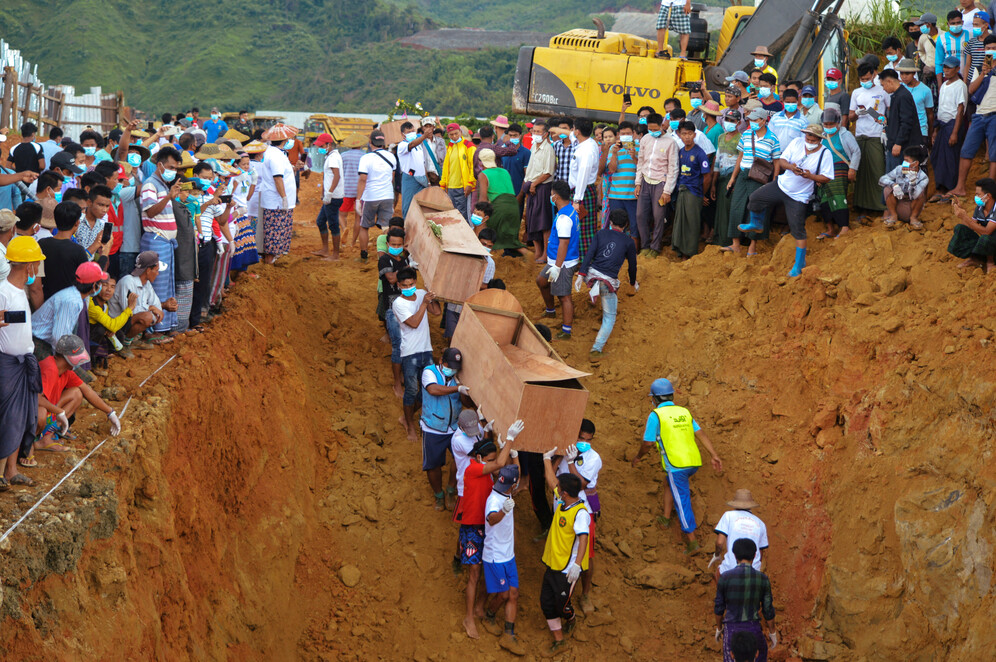
Jade is enclosed in rocks. To extract it, mining companies use diggers to remove the alluvial material above it and then transport the boulders to where they can be cut upon and examined. Thus unstable mud hills build up.
Scavengers from all over the country migrate to the state on Myanmar's northern border with China. They hope to find small stones containing jade in the waste left behind by the mining operations. They often live next to the waste mounds, where they are vulnerable to the landslides that periodically hit the unconsolidated hills.
The goose that lays the green, golden eggs for Chinese customers
Established mining companies and scavengers are motivated by the high value of Myanmar's jade. The name refers to two types of mineral, nephrite and jadeite. The latter is the most valuable, and it's estimated 70% of the world's high-quality supply comes from Myanmar. Jadeite comes in a variety of colours including blue, lavender and white, but is most famous for its different shades of green. It is prized for its beautiful colours and its hardness, which is similar to quartz.
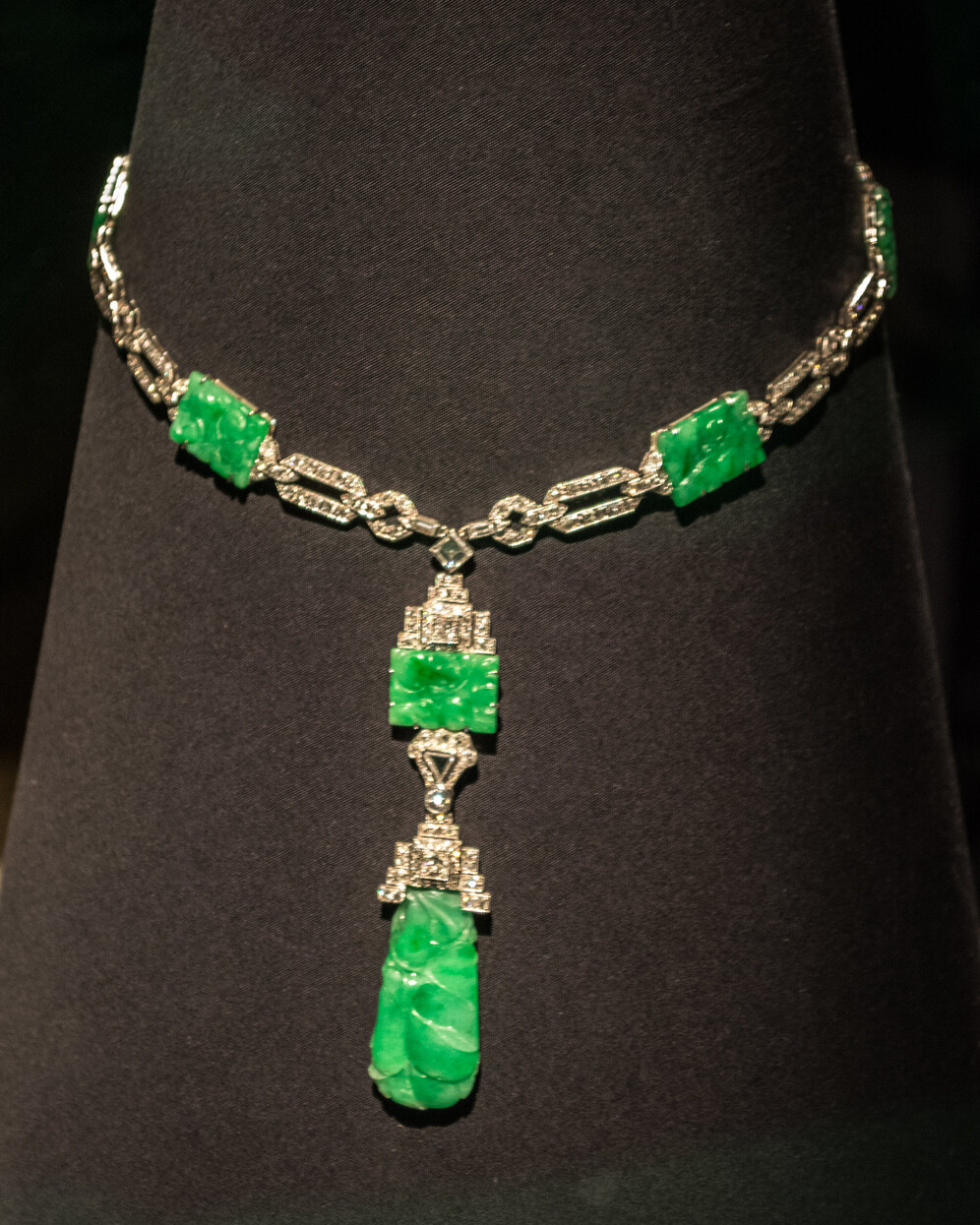
Since jade comes in an infinite variety of colours and qualities, there is no single market price for it, like there is for gold. However imperial green jade, of a vibrant emerald green colour, is worth more per gram than diamonds. In 2016, a "4.3-metres high, 5.8-metres long, and 210-tonnes heavy jade stone" was found in Kachin state at a site run by the Yadanar Taungtan Company in a joint-venture with the Ministry of Mining, Mining Today reports. Its value was estimated at an astonishing $170 million.
Jade is the quintessential Chinese gem, having been carved for centuries to make exquisite jewellery and artefacts. Traditionally, the Chinese believe jade communicates personal virtues to its holder and brings good luck.
In recent years, Chinese demand for jade has soared, according to industry observers. One Forbes contributor speculates this may be due not only to Chinese fondness for the gem but also that it's a convenient store of value for China's growing affluent class, in that it is easy to hide from the taxman. Whatever the case, most of Myanmar's jade crosses the border into China where it is carved and sold.
According to the much-quoted Global Witness, a London-based NGO, the turnover of Myanmar's jade reached an incredible $31 billion in 2014. The activists based this back of the envelope estimate on discrepancies between Chinese government trade data for that year, which reported $12.3 billion worth of gemstone imports from its neighbour, and Myanmar's jade extraction figures by weight, which amount to only a third of those imports. This is although Chinese imports are practically only jade, and Myanmar's jade overwhelmingly heads to China.
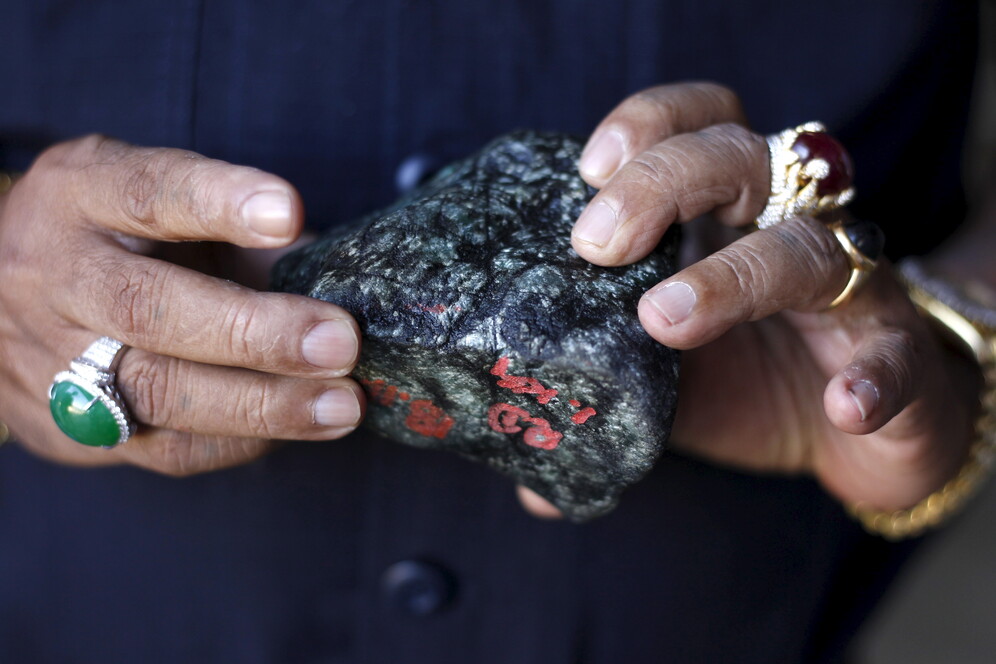
"Using Myanmar government production and sales data, and an estimate of the proportions of high, medium and low-grade jade as shares of production developed by Proximity Designs and the Harvard Ash Center, we undertook a new and in-depth analysis of the value of the jade business," a Global Witness press release states. "Our estimates put the value of Myanmar's official jade production in 2014 alone as high as $31 billion. An alternative methodology, which uses an average price per kilogram of jade derived from the Chinese import data yields a figure of $38 billion." Referring to nominal GDP figures, Global Witness claims "that is equivalent to nearly half the GDP for the whole of Myanmar". If true, jade exports bring in more money into the country than natural gas or rubies, another quasi-monopoly of the Burmese.
However, this wealth comes at a cost, "Hardly any of the money is reaching ordinary people or state coffers", laments Global Witness. Instead, the NGO denounces, contraband trade in jade funds both sides of the decades-long civil war between the Kachin Independence Army and government forces in the ethnic minority state. Opaque ownership of mining companies hides the involvement of drug barons and the siphoning off of profit by senior army personnel in the military-backed regime. The local Kachin people don't benefit financially. They get the environmental devastation, unsafe mines, a drug use epidemic among miners, and continued ethnic strife.
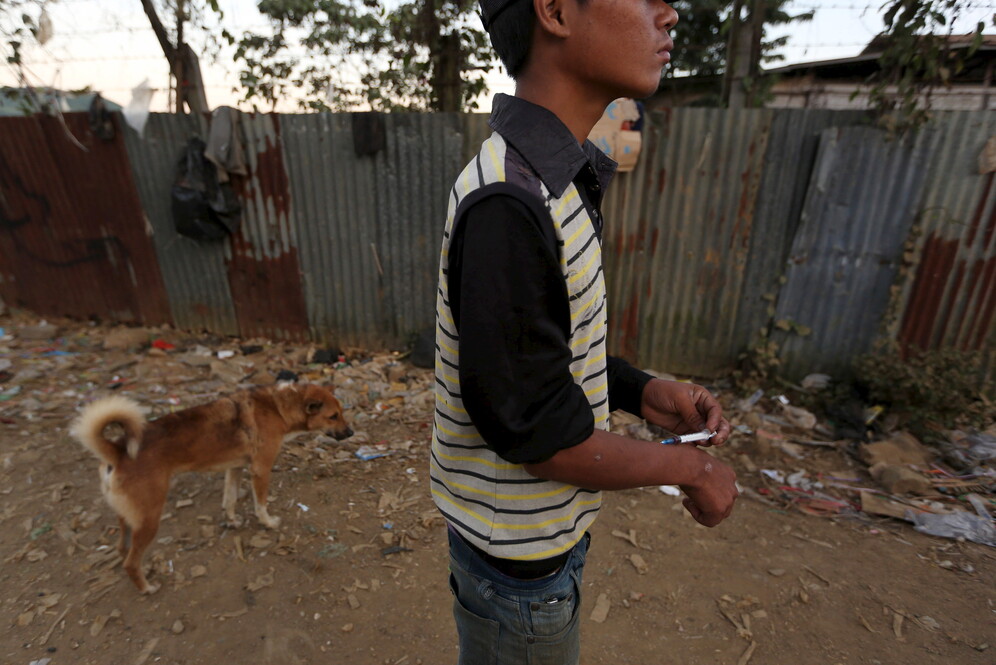
Global Witness has successfully advocated for targeted sanctions against senior Army figures suspected of benefiting from the mismanagement of the country's jade wealth. US sanctions on Myanmar's jade trade were lifted when Aung San Suu Kyi was elected in 2015. Still, the superpower is critical of Aung San Suu Kyi's lack of progress in cleaning up the industry, as demonstrated by recurring accidents. The US is now considering re-imposing sanctions as part of a "Magnitsky" act.
Follow the (Soros) money
The picture Global Witness paints is bleak, and designed to shame upstanding governments into action, but is the NGO's agenda really to improve the lot of local communities and bring peace?
According to its financial statements, Global Witness is not funded by small scale donations and individual supporters, but by government aid agencies and wealthy US philanthropists' foundations.
A top donor is the Soros family through the Foundation to Promote Open Society and the Alexander Soros Foundation. The son of George Soros, the controversial financier and philanthropist on a mission to reshape nations in line with his liberal values, Alexander Soros is a big fan of Global Witness.
Instead of funding "Band-Aid solutions" to cure social ills, he prefers to campaign against the causes of those ills, according to an interview the young man gave to Alliance magazine in 2012: "In order to get to the root causes, you sometimes have to take risks", he argued "It may not be risky to build a hospital in a war-torn country, for instance, but it could be risky to try to affect the issues of governance that are making civil wars possible and that increase the number of people that will have to go to that hospital. I'm beginning to see these things as a paradigm of greatest effectiveness, and that's one of the reasons I love Global Witness."
Problem-solving US or China style
Thus it is US billionaire money funding this prominent, still ongoing, campaign, against the ills of Myanmar's jade industry. In particular, Global Witness is seeking to influence US foreign policy towards Myanmar. In a 2014 report, it wrote: "The approach taken by the US government will be pivotal. In practice, the US is the ultimate international arbiter on Myanmar's political transition and both the Washington and Nay Pyi Taw governments know it. "
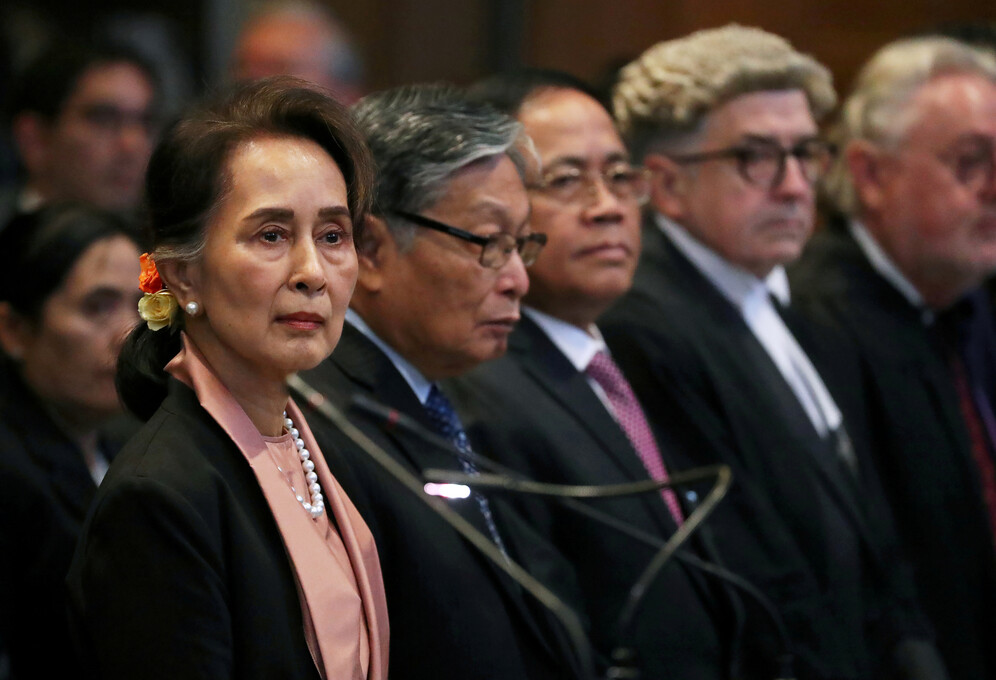
This may be exaggerating US influence over the country. Myanmar's trade is mostly with Asian countries and its main partner is China. At a US Senate Foreign Affairs Committee hearing on the country's foreign policy towards Burma in 2009, as the US administration insists on calling it, Senator Jim Webb deplored the ineffectiveness of the decades long American policy of isolating a "regime" it couldn't control: "the situation we face with Burma is an example of what can happen when we seek to isolate a country from the rest of the world, but the rest of the world does not follow."
So what are US interests in Myanmar? Assistant Secretary of State Campbell claimed they were purely benevolent: " We've stated very clearly our goals for Burma: a peaceful, democratic, stable government."
It is hard to believe that a resource-rich country similar in size and population to France, wedged between India and China, the world's present and future superpowers, and controlling access to the Indian Ocean for the Chinese economy, holds no special interest for the United States. Especially since the CIA has been active in Burma supporting Chinese nationalist troops in the years following the Communist revolution.
Still, the hearing focused on democracy and human rights, particularly for ethnic minorities. Those present debated whether sanctions aimed at regime change could put an end to decades of military rule, or whether respectful engagement with those currently in power would be more effective at achieving US official goals.
In particular, the aim was for free and fair elections that would hand over power to Nobel Peace Prize winner Aung San Su Kyi, still under house arrest at the time. As a result, the Obama administration achieved a "reset" and most sanctions were lifted following the 2015 elections which led to a power-sharing arrangement between the military and the pro-democracy icon.
In 2017, under the Trump administration, the tone of the next Senate hearing was very different. 600,000 Muslim Rohingya were on the run from government troops, leading to accusations of genocide, and US officials expressed their disappointment at their former heroine's unsympathetic approach to the plight of the Rohinghya. There was talk of new "Magnitsky Act" style sanctions.
Speakers at the 2009 hearing had delivered a comprehensive critique of the American regime change tool kit. Assistant Secretary of State Campbell was surprised that the Myanmar leadership feared an American invasion, but, he added, "we've made very clear that the United States has no military ambitions or objectives of any kind inside the country".
Dr Thant Myint-U, a historian, gave a potted history of the country to explain why the Burmese State was still wracked by conflict: "there's a myth that Burma emerged from British rule in 1948 as a peaceful democracy with all the attribute necessary for later success, only to fall mysteriously into dictatorship and extreme poverty. But, Burma in 1948 was actually already at civil war, its economy in ruins. And this civil war has continued until today. It is the longest running set of armed conflicts anywhere in the world, setting the Burmese Army against an amazing array of battlefield opponents, from the mujahideen along the former East Pakistan/Bangladesh border to Beijing-backed Communist rebels."
He questioned whether US lawmakers had got the Myanmar authorities' motives wrong: "State-building in Burma since then has gone hand in hand with warmaking, and the military regime today remains, at its core, a counterinsurgency operation. It was designed and built up to identify enemies, contain them, and crush them when possible. The men in charge may be motivated by desires for personal profit and power, but they also believe themselves to be patriots holding the country together. And after two generations of fighting foreign-backed rebellions, they are primed to see foreign conspiracies behind all opposition."
It is difficult to tell whether the ineptness of US foreign policy towards Myanmar is sincere or a secret dastardly plot to maintain a failed state on China's doorstep.
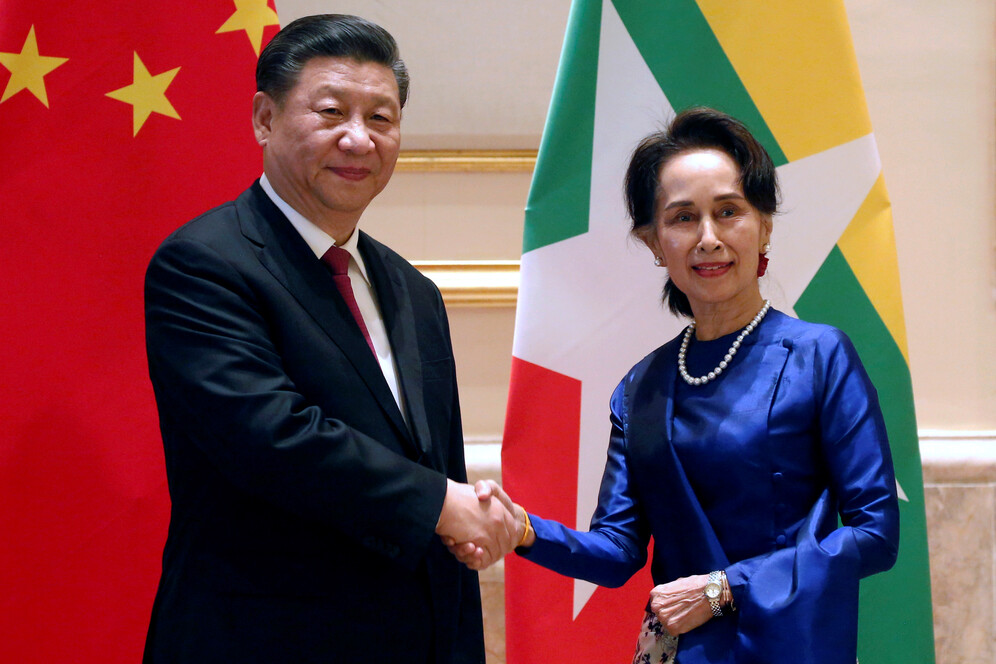
The latter's approach is rather different. Rather than panicking at human rights abuses, China argues that a rising tide raises all boats, and that interethnic tensions over the sharing of the mineral resources cake will die down if the cake gets much bigger thanks to investment and industrialisation.
In the past, China had funded a communist insurgency against the Burmese socialist government. This turned into an array of ethnic minority armed separatist movements on Myanmar's borders by the 1990s. Beijing has sold arms to all sides of the conflict. However, relations between the two countries have improved. China's forte is economic development, and it wants to include Myanmar in its Belt and Road Initiative. It has a vested interest in reducing violence on its doorstep, and wants a logistical corridor between landlocked Yunnan Province and the Indian Ocean.
Accidents like the ones at Myanmar's jade mines are deadly because of the poverty that drives scavengers to risk their lives for a chance to strike green gold, due to stalled economic development. The tensions in ethnic minority states also weakens the legitimacy of Myanmar's authorities to police health and safety regulations. Outside meddling may not have caused Myanmar's economic and political problems, but even US senators admit it hasn't been very good at preventing tragedy.